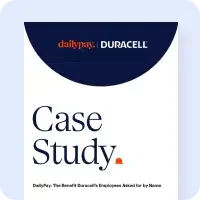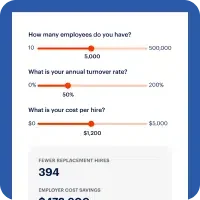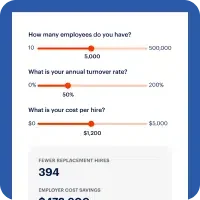The food and beverage industry is in the midst of a persistent labor crisis. With high turnover and a struggle to fill critical production roles, companies are looking for solutions. For many, the first instinct is to increase wages and offer sign-on bonuses. And while competitive pay is a crucial component of attracting talent, it’s only one part of a much larger puzzle.
The Food & Beverage Labor Crisis: What’s Driving It?
The challenges facing food manufacturers today are unique and multifaceted. The National Association of Manufacturers recently surveyed its members, and a staggering 48% of respondents said that attracting and retaining a quality workforce was one of their primary business challenges.1
Unlike many remote-friendly jobs, front-line food manufacturing roles are tied to the plant floor. They require a physical presence and dedicated shift coverage, which can make it difficult for companies to accommodate the evolving expectations of today’s workforce. The core challenge in meeting these expectations, however, often boils down to compensation and competition in a tight labor market.
As Robert Acree, a Food Manufacturing Operations Consultant, put it, “Hourly pay matters. If a plant down the road is offering even $3 more per hour for the same kind of work, some employees won’t think twice about leaving.”2
Why Competitive Pay Alone Falls Short
While a competitive wage is the foundation of a fair compensation package, it doesn’t build the long-term loyalty and engagement needed to reduce turnover. High wages may attract new employees, but they don’t solve the underlying issues that often lead to departures.
In a competitive market, employees will always look for better opportunities. The risk of being outbid on wages is constant. To build a truly resilient workforce, you need to look beyond the hourly rate and consider what other benefits can create a stronger connection with your employees.
- From January 2024 to August 2025, Rudolph Foods Company saw a 24% average improvement in turnover among DailyPay enrolled users.3
- Over the last year, Byrne Dairy & Deli has seen a 18% tenure improvement among DailyPay enrolled users.4
This is how DailyPay becomes a game-changer.
How On-Demand Pay Strengthens Retention
On-Demand Pay, also known as earned wage access, allows employees to instantly access a portion of their earned pay before their scheduled payday. This seemingly simple benefit can have a profound impact on an employee’s financial well-being, providing the flexibility they need to handle unexpected expenses or manage their cash flow.
DailyPay’s data shows a significant improvement in turnover for employees who are enrolled in their program compared to those who are not.
By giving employees control over their pay, employers can build stronger, more engaged, and more loyal teams.
Learn more about how DailyPay can improve retention for the manufacturing industry.
Real Results from Leading Food & Beverage Brands
The positive impact of On-Demand Pay is not just a theory; it’s a proven reality in the food and beverage industry. Leading companies are seeing tangible results:
To stay competitive in the food and beverage industry, you need a solution that goes beyond traditional compensation models. On-Demand Pay provides a powerful way to attract talent, reduce turnover, and build a more engaged and loyal workforce.
Ready to see how On-Demand Pay can transform your business?
Head of Benefits & Payroll TJ Barron of ReddyIce shared their experience with the platform: “DailyPay’s integration into Workday is the perfect addition to our financial wellness benefits package as it enables the team members to access their earned wages to pay bills on their own schedule. The implementation was easy and seamless and we are thrilled to roll this out to our team members.”
1 NAM MANUFACTURERS’ OUTLOOK SURVEY FIRST QUARTER 2025, March 6, 2025:DailyPay, 2020
2 Catena Solutions Trends Insights Report Plant Turnover:DailyPay, 2020
3 Internal Data, October 2025:DailyPay, 2020
4 Internal Data, October 2025:DailyPay, 2020











